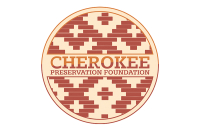Confederates pushed road over Newfound Gap
On Jan. 12, 1864, a Confederate battery of artillery and about 650 men under the command of Gen. Robert B. Vance crossed the Smokies at Indian Gap — situated at 5,317 feet between Clingmans Dome and Newfound Gap along the high divide between North Carolina and Tennessee — in an attempt to secure provisions, screen the main approaches to North Carolina, and guard the left flank of the Longstreet’s main Confederate force at Greeneville, Tenn.
The primary military objectives failed miserably, but the dramatic crossing deserves to be remembered.
Most contemporary accounts of the crossing imply that the road was built during the Civil War. It was, however, commissioned by the N.C. General Assembly more than three decades prior to the war. Tom Robbins, a ranger/historian who was stationed at the Oconaluftee Visitor Center for many years, described the event in an issue of the Summit Magazine (Summer 1986):
“In 1831, the N.C. General Assembly authorized the formation of the Oconaluftee Turnpike Co. to build a road through the valley to the top of the Smoky Mountains. Road commissioners were selected from the local community and authorized to sell stock and collect tolls ….
“Construction of the road was difficult and time-consuming. Cliffs and the river had to be avoided, thus lengthening the route. Blasting involved hand-drilling holes in rocks and packing the holes with black powder. Large rocks were sometimes split by burning logs on them, then pouring cold water on the hot rocks.
“The road, completed in 1839, followed an older Indian trail along much of its route. Initially, the principal traffic on the turnpike was livestock being driven to market. But not long after the road’s completion several men living in the valley formed the Epson Salts Manufacturing Co. in an attempt to tap the mineral resources on the southwestern flank of Mount LeConte in Tennessee.”
Related Items
Historical accounts differ as to just when William Holland Thomas and his Thomas Legion started improving and using the road during the Civil War as part of his strategy to guard all of the mountain passes into North Carolina.
The one provided by John Preston Arthur in Western North Carolina: A History from 1730-1913, (1914) is perhaps the most accurate.
Arthur states that Thomas obtained “an order from General Kirby Smith in the spring of 1862 to raise a battalion of sappers and miners ... and put them to making roads, notably a road from Sevier County, Tennessee, to Jackson County, N.C. This road followed the old Indian trail over the Collins Gap (another name for Indian Gap), down the Ocona Lufty river to near what is now Whittier, N.C.”
The Indian component of the Thomas Legion, made up of infantry, artillery, and cavalry, was initially comprised of 130 Cherokees recruited in April 1862. That story — involving their use as scouts, the alleged “atrocities” involving scalping by “red savages” made by the North, and the war’s aftermath of poverty and devastating illness on the Qualla Boundary — is fully told in Vernon Crowe’s Storm in the Mountains: Thomas’ Confederate Legion of Cherokee Indians and Mountains (1982) and John Finger’s The Eastern Band of Cherokee, 1819-1900 (1984).
By all accounts the winter of 1864 was unusually cold with considerable snow in the higher elevations. The Confederates and their Cherokee allies worked their way up the Oconaluftee Valley to about where the present Oconaluftee Overlook is Located.
Numerous accounts of what happened from there on have directly intimated that it was Hannibal crossing the Alps in miniature. William R. Trotter in Bushwackers! The Civil War in North Carolina (vol. 2, 1988) writes:
“The Indian Gap road that Thomas and his engineers had been hacking through the mountains toward Sevierville was passable as far as the crest of the Smokies, but beyond that the route was little more than a mule-path: steep, rocky, and too narrow even for an ox cart.
But what oxen could not do, men could. At the crest, Vance’s men dismantled their artillery. Teams of men carried the wheels, axles, rigging, and ammunition. The gun barrels themselves were harnessed to ropes and rolled, pushed, or dragged down the far side, gun metal screeching on naked rock. The march was characterized not only by Homeric physical exertion, but also by vile weather; Vance and his men did all this into the teeth of savagely cold winds that scoured the mountain tops like a sand-blaster ....”
After reassembling their equipment at the base of the Smokies, Vance’s men had initial success on Jan. 13 with the capture of a Union caravan of about 30 wagons “that were a Godsend to the Confederates.” But shortly thereafter, flushed and cocky by his “little victory,” Vance was smashed at Schultz’s Mill on Cosby Creek by Col. William Palmer’s 15th Pennsylvania Calvary.
Readers can contact George Elison at P.O. Box 1262, Bryson City, N.C., 28713, or at This email address is being protected from spambots. You need JavaScript enabled to view it..









